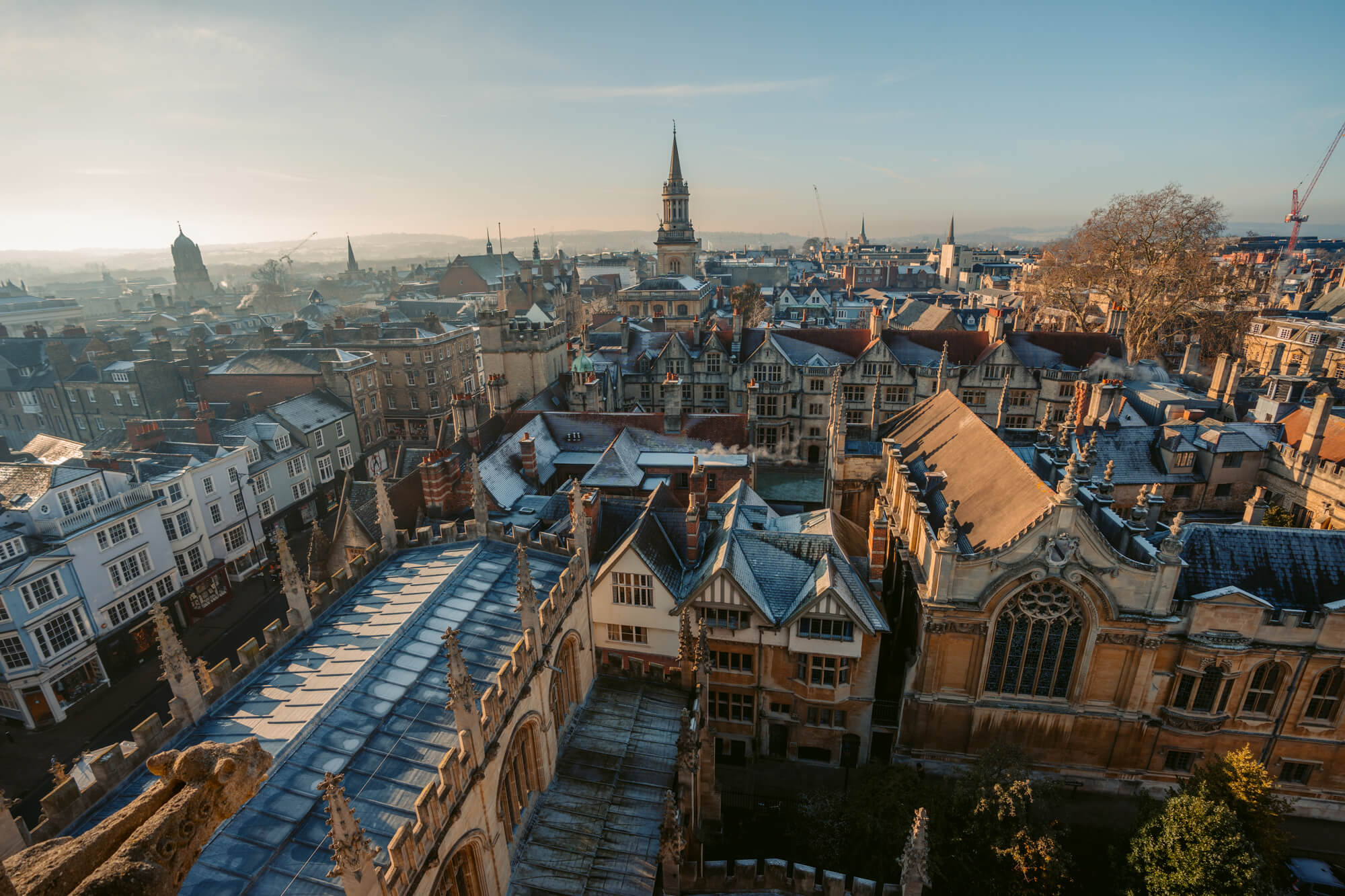*FYI - this post may contain affiliate links, which means we earn a commission at no extra cost to you if you purchase from them. Also, as an Amazon Associate I earn from qualifying purchases. Check out our Privacy Policy and Disclosure for more info.
From the oldest English-speaking university in the world to a Guinness World Record-holding bookshop, those looking for places to visit in Oxford are truly spoiled for choice.
Oxford is most known for its stunning university, but there is more to explore in this historic city than just its university buildings.
In this post, we’ll be sharing our top picks for places to visit in Oxford including the best museums and pubs.
We hope you enjoy learning about this historic piece of Oxfordshire, and be sure to let us know in the comments which Oxford must-sees we should add to our list!
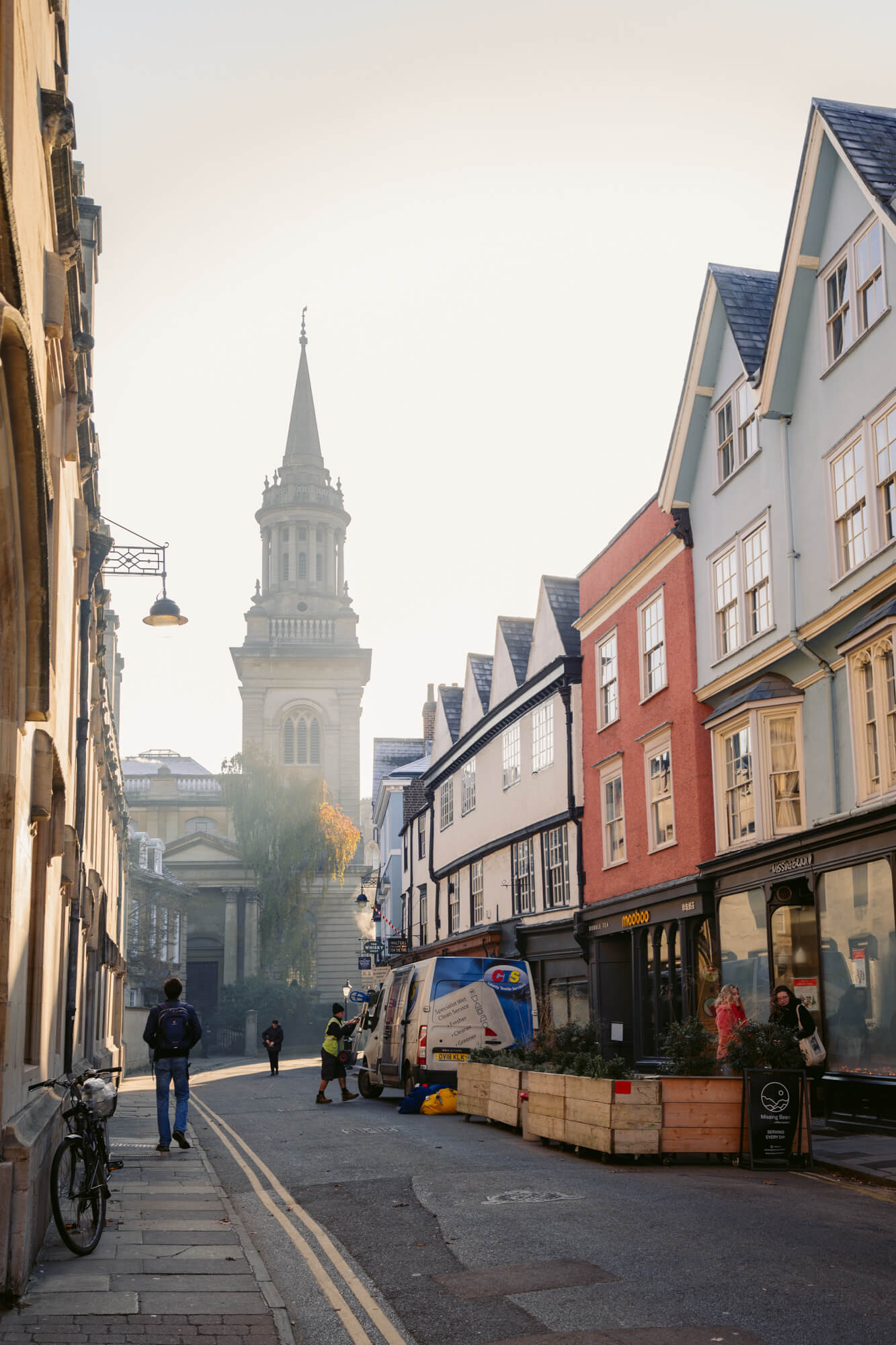
The Bodleian Library and Radcliffe Camera
As the main research library for the University of Oxford, the Bodleian Library is one of the most famous libraries in the world, as well as one of the oldest in Europe. It was first founded in the 14th and 15th-centuries, then re-founded under the patronage of Sir Thomas Bodley in 1598.
The Bodleian Library is housed in a group of buildings that together make up what is thought of as the ‘heart of Oxford’. One of these is the Radcliffe Camera, a round neo-classical building that originally housed the Radcliffe Science Library. Now it is one of the reading rooms of the Bodleian, as generally books cannot be removed from the library.
Parts of the Bodleian Library have famously been used in film and television, particularly in the Harry Potter films where the Divinity School was used to represent the Hogwarts hospital wing and Duke Humfrey’s Library stood in for the Hogwarts library.
PRACTICAL INFORMATION FOR VISITING: It is free to visit Blackwell Hall and any exhibitions at the Bodleian Library. To enter the Divinity School you need to pay £2.50 per person and it’s best to book your time slot online beforehand. You can only visit the interior of The Bodleian Old Library and Radcliffe Camera on a guided library tour, which takes half an hour and costs £9 per person.
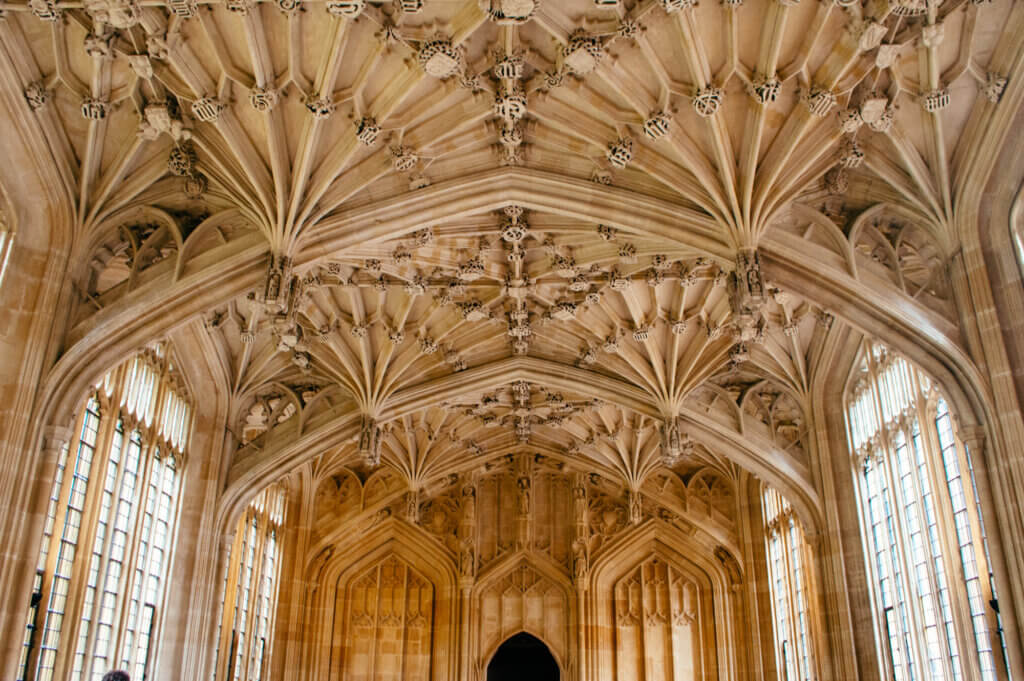
Christ Church College
Christ Church is one of the largest colleges of Oxford University, with multiple significant buildings that have led, in part, to it being the most popular college for visiting tourists and one of the best places to visit in Oxford. It’s also the only college with its own cathedral!
This college has an illustrious past, having been founded by Henry VIII in 1546 and producing many British prime ministers – in fact, more than any other college at either Oxford or Cambridge. This is also the college that Alice in Wonderland author Lewis Carroll attended, and parts of the college clearly inspired some of his work.
Christ Church contains the largest quadrangle in Oxford, as well as a famous bell tower (called Tom Tower) that was designed by Sir Christopher Wren. The Great Dining Hall inspired the dining hall at Hogwarts in Harry Potter, and parts of Christ Church were also used when filming scenes in the first two Harry Potter films.
PRACTICAL INFORMATION FOR VISITING: You absolutely need to book your timed ticket in advance online to enter Christ Church College. There may also be certain parts off-limits to visitors (as it’s a working college and cathedral) so make sure you check carefully before making your booking.
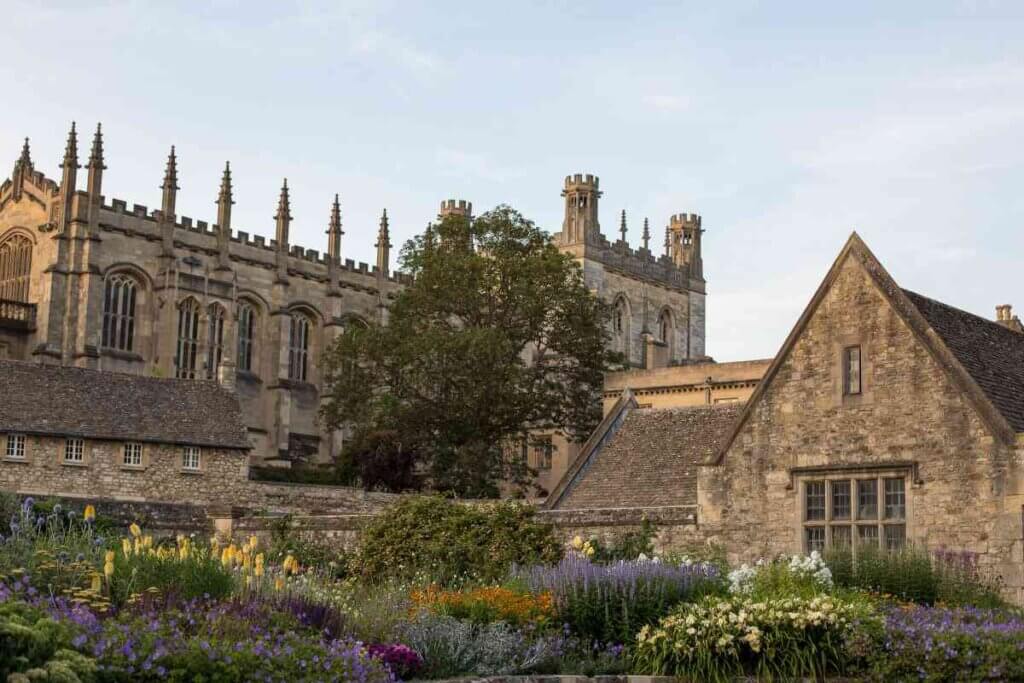
St. Mary the Virgin Church
Victorian poet Matthew Arnold described Oxford as ‘the city of dreaming spires’ in his poem Thyrsis, because of the amazing architecture. Oxford is indeed home to many churches and cathedrals, as well as other buildings with tall towers or spires, but the church of St. Mary the Virgin might be the most important.
The University Church of St. Mary the Virgin is located in the centre of where Oxford grew as a university city. A church has been situated on this location for over 1,000 years and even today there are still services, so it’s one of the most visited Oxford attractions.
Fans of C. S. Lewis (who famously attended Oxford) will want to pop down the side alley of St. Mary’s Passage to see a wooden door bearing a lion and flanked by fauns, which is thought to have inspired the wardrobe door from The Lion, The Witch and The Wardrobe!
St. Mary’s spire is often called one of the most beautiful in England, but if you actually go up it, you will also be rewarded with some of the best views over Oxford, particularly of the Radcliffe Camera.
PRACTICAL INFORMATION FOR VISITING: It’s free to enter the church but you will need to pay £5 if you want to climb the tower.
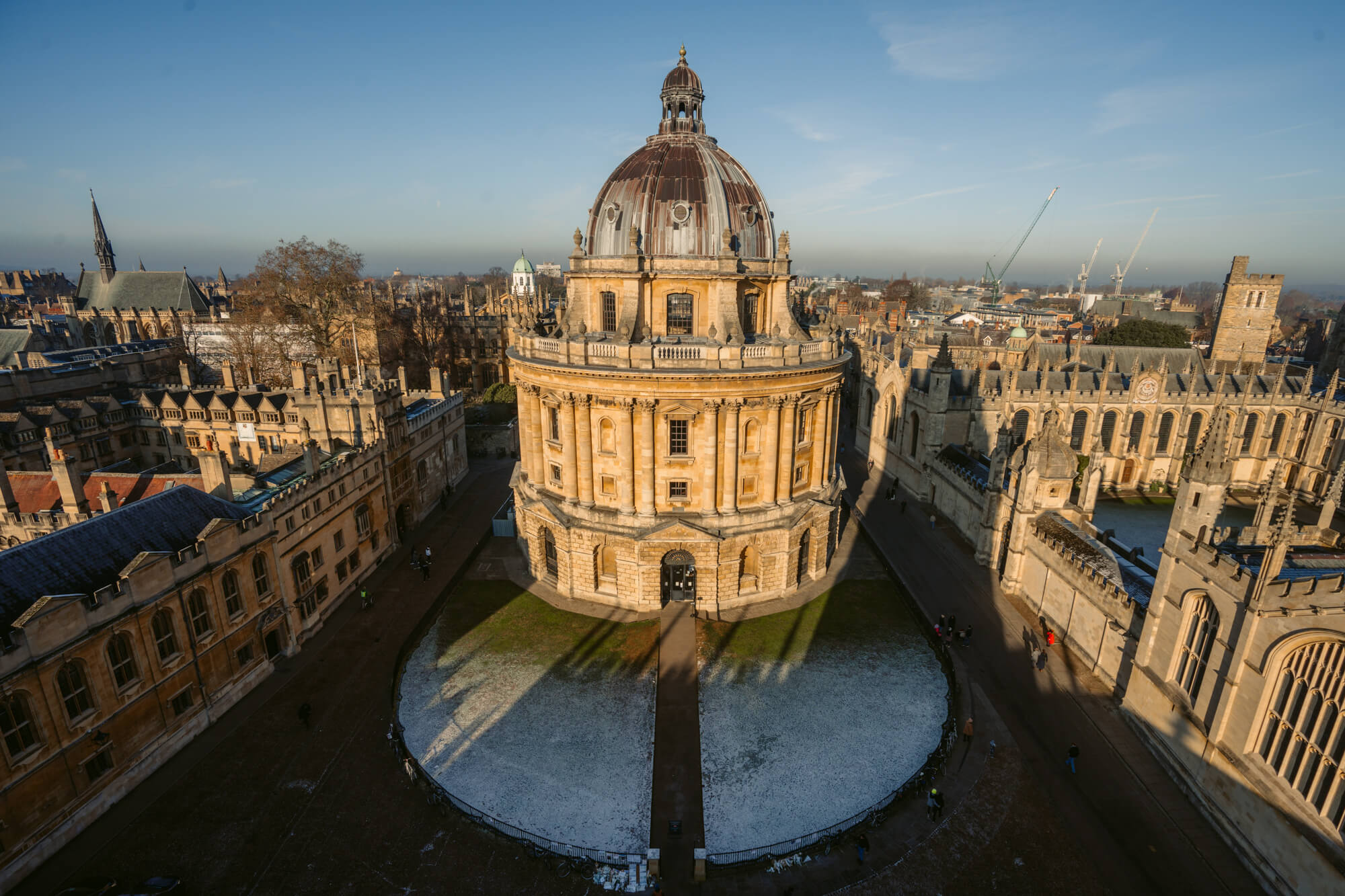
The Ashmolean Museum of Art and Archaeology
Oxford’s Ashmolean Museum of Art and Archaeology (usually just called the Ashmolean) is just as famous as other parts of the city, as it is the world’s second oldest university museum as well as the oldest public museum in the United Kingdom.
It is named for the cabinet of curiosities donated to the university by Elias Ashmole in 1677. Anyone who enjoys a museum will not want to miss it, as today it houses many treasures of art and archaeology, from Egyptian artefacts to modern paintings. It’s truly one of the most fascinating Oxford destinations.
Along with the treasures on display, there’s a lovely rooftop restaurant where you can have lunch or afternoon tea while looking over Oxford. It’s free to enter the museum but booking your time slot beforehand is encouraged, especially if you wish to dine in the restaurant.
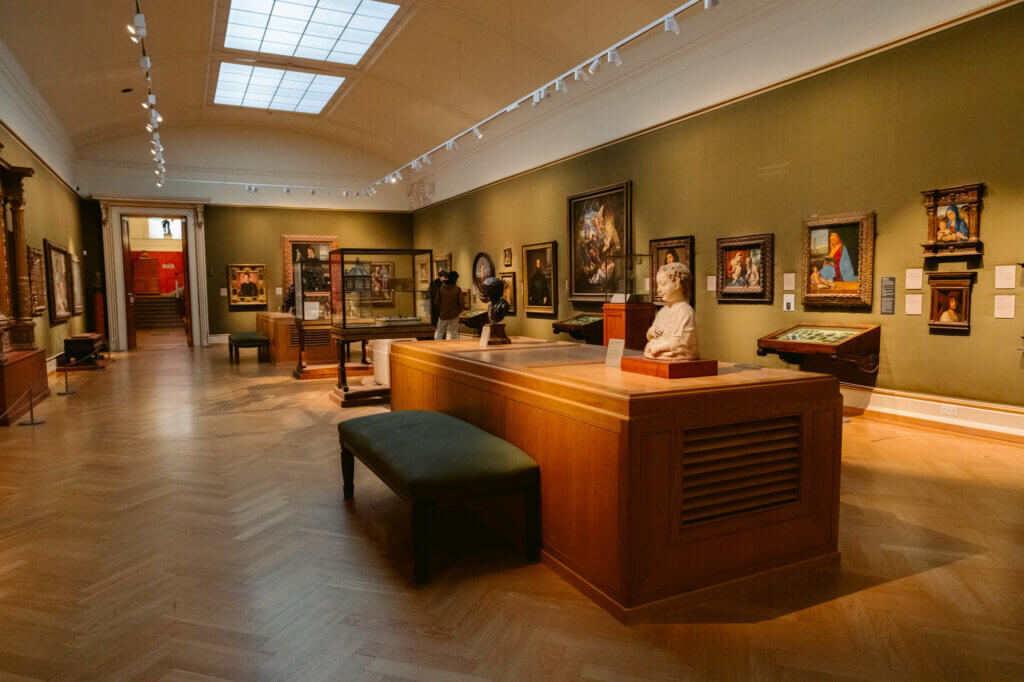
Oxford Castle and Prison
One of the rare things to do in Oxford that aren’t related to the university is a visit to the party ruined Norman castle that later served as Oxford’s prison. Today it is a historical site and hotel!
When William the Conqueror came to England there was a wooden moat and bailey castle on the location, which was later fortified with a stone keep. Today the keep is no longer standing, but the man-made mound where it stood offers views over the city, as does St. George’s Tower.
Visitors can also descend into the underground crypt while costumed actors make the experience fun for children. Additionally, if you’re staying overnight in the city then the Malmaison Oxford hotel in part of the old prison is definitely an unusual place to stay!
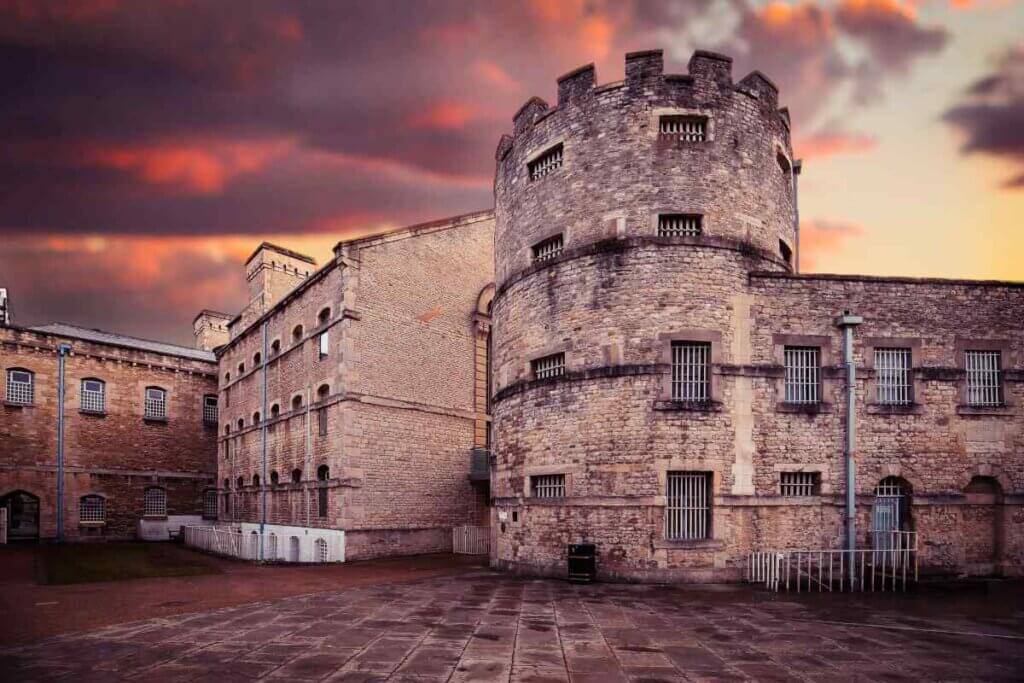
Sheldonian Theatre
Often just called ‘the Theatre’, the Sheldonian Theatre holds a special place in the hearts of Oxford students as this is where all the graduation and degree ceremonies are held.
It was designed by Sir Christopher Wren who, of course, later went on to design other masterpieces such as St. Paul’s Cathedral in London.
The Sheldonian’s design was interesting in that Wren took a turn from the largely Gothic architectural styles in Oxford, instead creating a D-shaped structure much like a Roman theatre.
While these Roman theatres were usually roofless, that wouldn’t work in the British climate, so Wren had to devise a roof truss to avoid putting load-bearing columns into the main space. There is also a stunning ceiling fresco by Robert Streater which shows “truth descending on the arts and sciences to expel ignorance from the university”.
It’s not known exactly what the “Emperor Heads” outside the theatre are supposed to represent, but they are one of the most recognisable sights in Oxford!
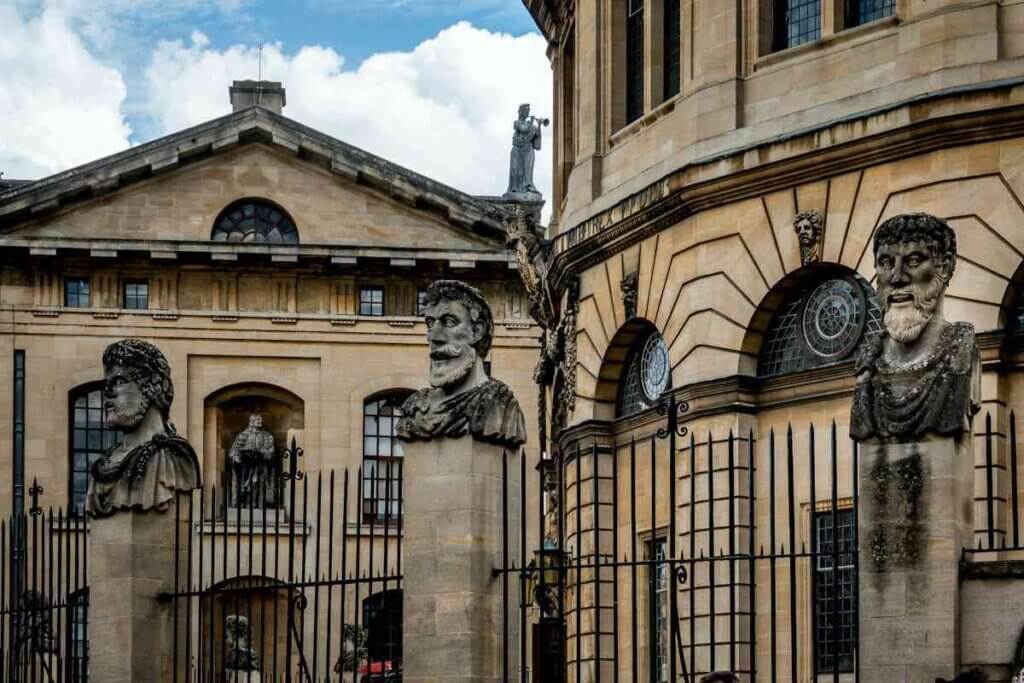
Hertford Bridge (AKA the Bridge of Sighs)
The Hertford Bridge is usually called the Bridge of Sighs, because of its similarity to the Bridge of Sighs in Venice. It was originally built to connect the two sections of Hertford College but there are a number of myths surrounding why it is called the Bridge of Sighs.
One such myth which was debunked, is that there was a survey of the health of Oxford students a long time ago and it was found that those at Hertford College were the heaviest, so the bridge was closed to force them to walk more stairs. It’s also been suggested that the sighs respond to the sighs students make when receiving exam results!
The distinctive bridge is a popular Oxford tourist attraction and has even appeared in films such as ‘X-Men: First Class’, as well as the television series ‘Inspector Morse’.
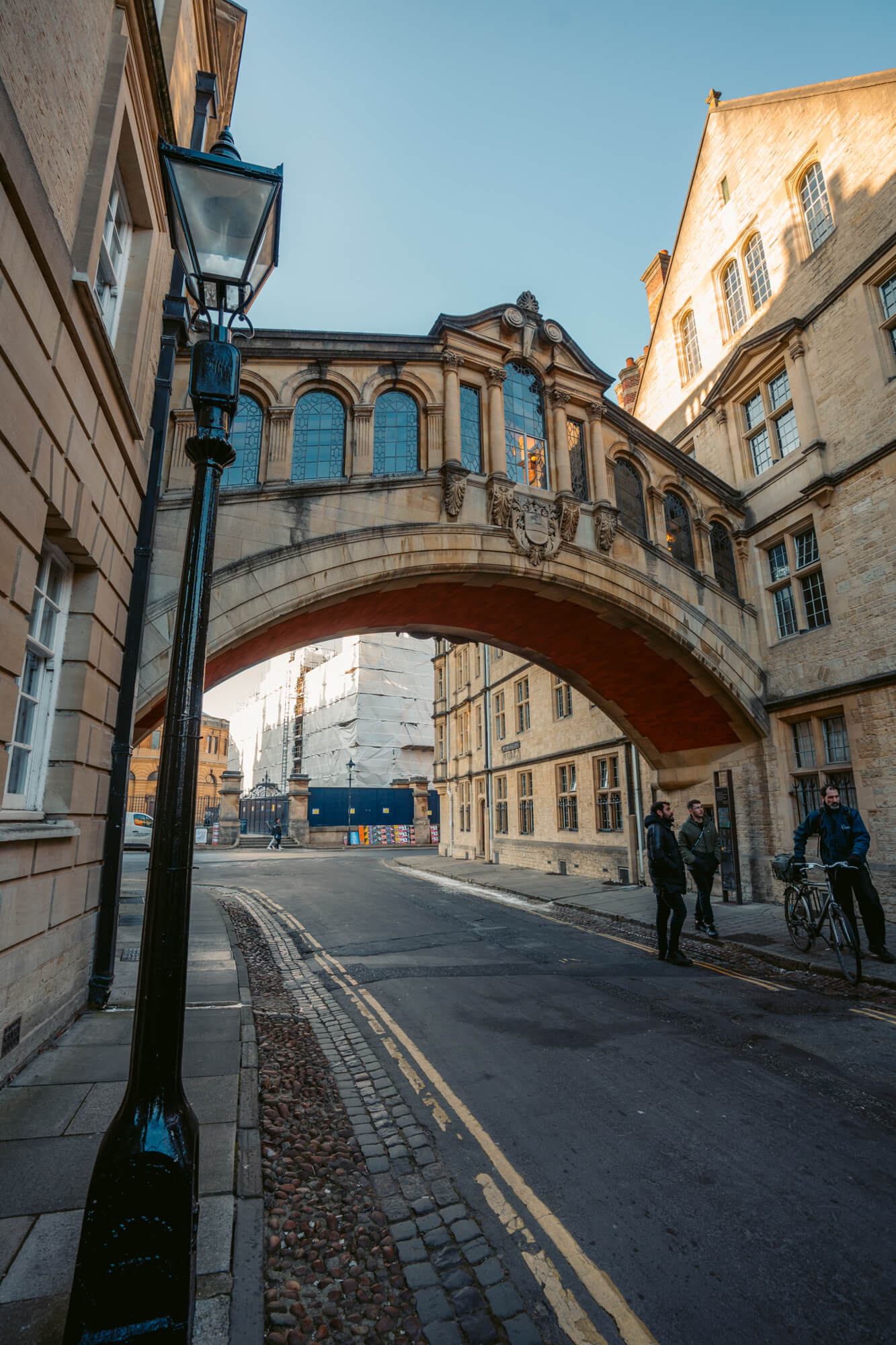
Magdalen College
Magdalen College (pronounced Mawdlin) is one of the most beautiful colleges in Oxford, as well as the only one with a deer park within the grounds!
It’s also one of the wealthiest and academically strong colleges with a bell tower that’s almost as famous as the one at Christ Church. On May Morning (May Day), the college choir sings from the top of this tower at 6am, which must be like hearing angels from the heavens…
Like most of the colleges, you can visit the buildings and grounds for a small fee (£7). Oxford Botanic Garden is located right next door, and is also another gorgeous spot for walking amongst gardens. Fans of Phillip Pullman’s His Dark Materials trilogy will also want to stop at Lyra and Will’s bench, which is located within the gardens.

Oxford University Natural History Museum
The Oxford University Natural History Museum is one of the best things to see in Oxford, particularly if you like seeing animal and dinosaur skeletons. Best of all, it’s totally free!
As well as impressive skeletons, the museum houses collections divided into three sections: Earth Collections, Life Collections and Archive Collections. There are also statues of important scientists on the ground floor of the exhibition hall, while the hall itself is a spectacular square court with a glass roof, supported by cast iron pillars.
The museum’s logo is a dodo since the museum houses the only surviving remains of dodo soft tissue that exists anywhere in the world. It’s also thought that the 1651 Jan Savery painting of a dodo on display inspired Lewis Carroll when creating the Dodo character in Alice’s Adventures in Wonderland.
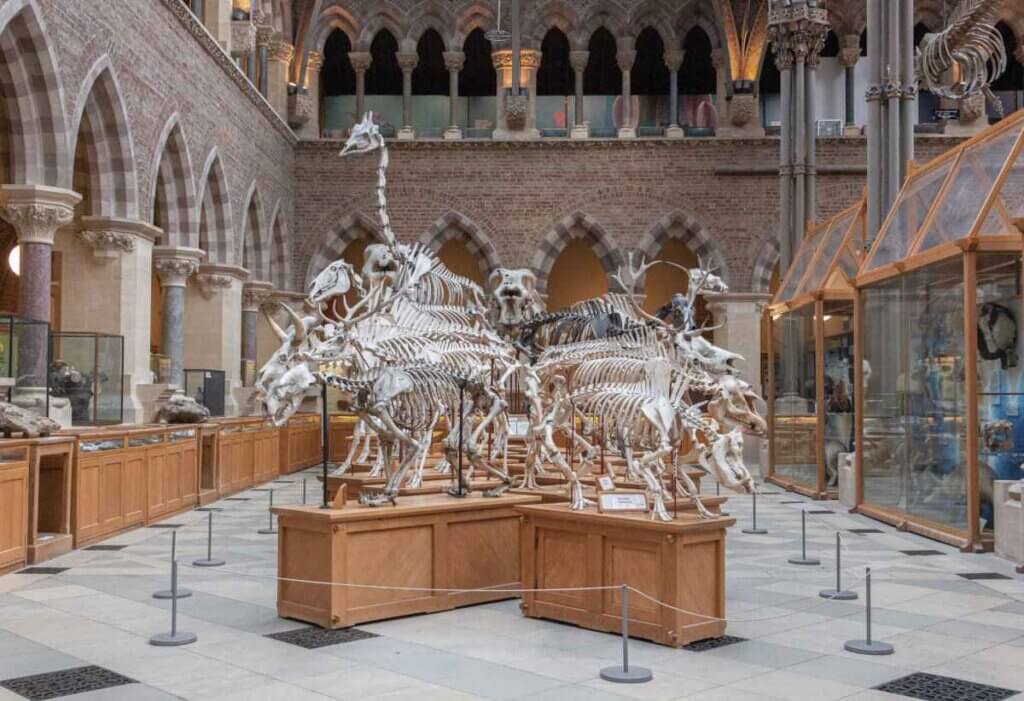
Blackwell’s Bookshop
Bibliophiles heading to Oxford will doubtless have only one destination in mind, the famous and record-breaking Blackwell’s Bookshop.
Blackwell’s is now a British academic book chain, but the first ever shop was opened on Broad Street in Oxford and remains there to this day. One of the most impressive facts about Blackwell’s in Oxford is that it holds a Guinness World Record for the biggest bookselling room on the planet – the Norrington Room.
While Blackwell’s was a small family business in the beginning, its popularity led to the basement being extended so that the Norrington Room could be created. This room features FIVE KILOMETRES of shelving and more than 150,000 books!
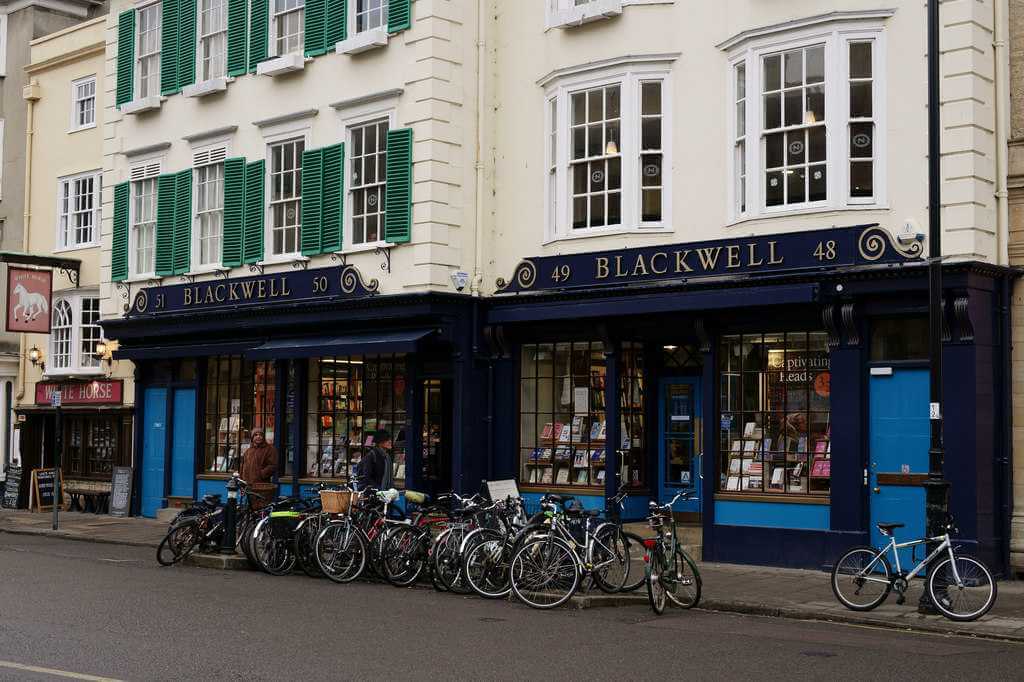
The Turf Tavern
While Oxford is home to a number of famous pubs, the Turf Tavern might be the most atmospheric. It’s located down a long winding alley just behind the Bridge of Sighs (if you have your back to the Bodleian Library) and is thought to have been around since the 13th-century.
The Turf Tavern has always been popular with Oxford students and a number of notable people have visited, or even set world records here!
Former Australian Prime Minister Bob Hawke set a Guinness World Record for drinking a yard glass of ale in 11 seconds in 1954, and Richard Burton, Tony Blair, C. S. Lewis, Margaret Thatcher, Stephen Hawking and Bill Clinton were all known to also frequent the pub while students at Oxford.
Another famous pub worth visiting is the Eagle and Child. This is where a literary group known as The Inklings used to meet for lunch and to discuss literature. Members of The Inklings included C. S. Lewis as well as J. R. R. Tolkien, author of The Hobbit and the Lord of the Rings trilogy.
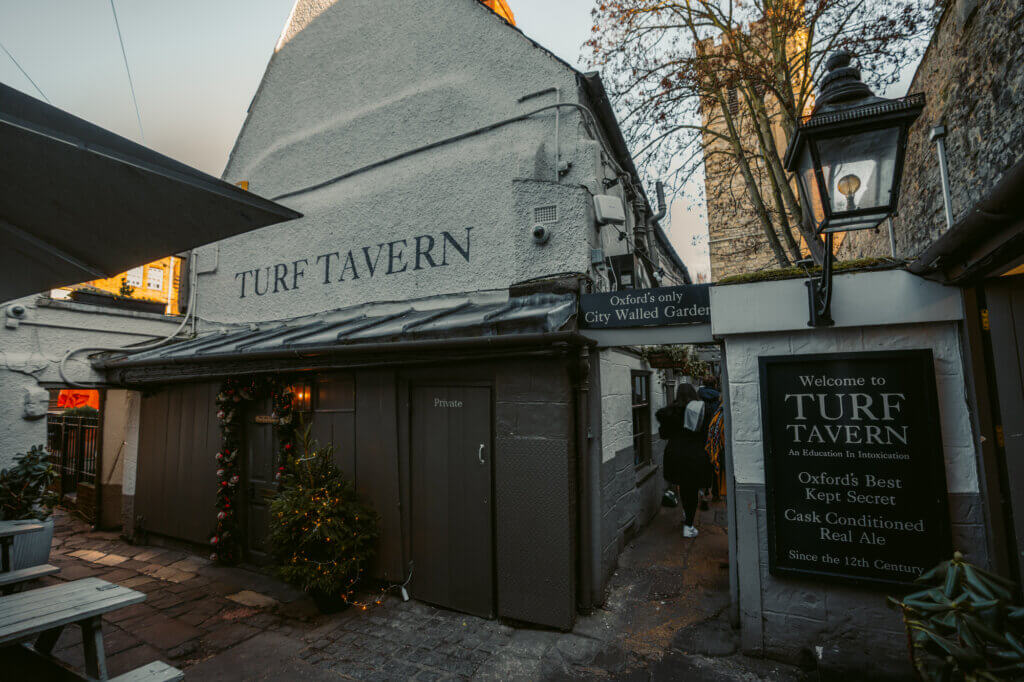
The Covered Market
First constructed as a produce market in the 1770s, the Oxford Covered Market is today one of the best places in the city for trying food and drink from around the world.
It’s one of the oldest continually operating markets in the country and while you can still shop for flowers, meat, fish and vegetables here, it’s also home to many boutique clothing stores along with places to eat and drink.
Within this beautiful market, you can purchase gifts, clothing, soap, and plants, but it’s the food offerings that really make it a must-visit destination.
Along with classic British fare, including the famous Oxford sausage, there are numerous shops offering delicious worldwide treats, making it an excellent spot to visit for a meal or a snack and drink with friends.
Along with cakes, smoothies and chocolates, there are also stalls selling Chinese and Japanese cuisine, pizzas, gelato, and even Lebanese dishes. Make sure you come hungry!
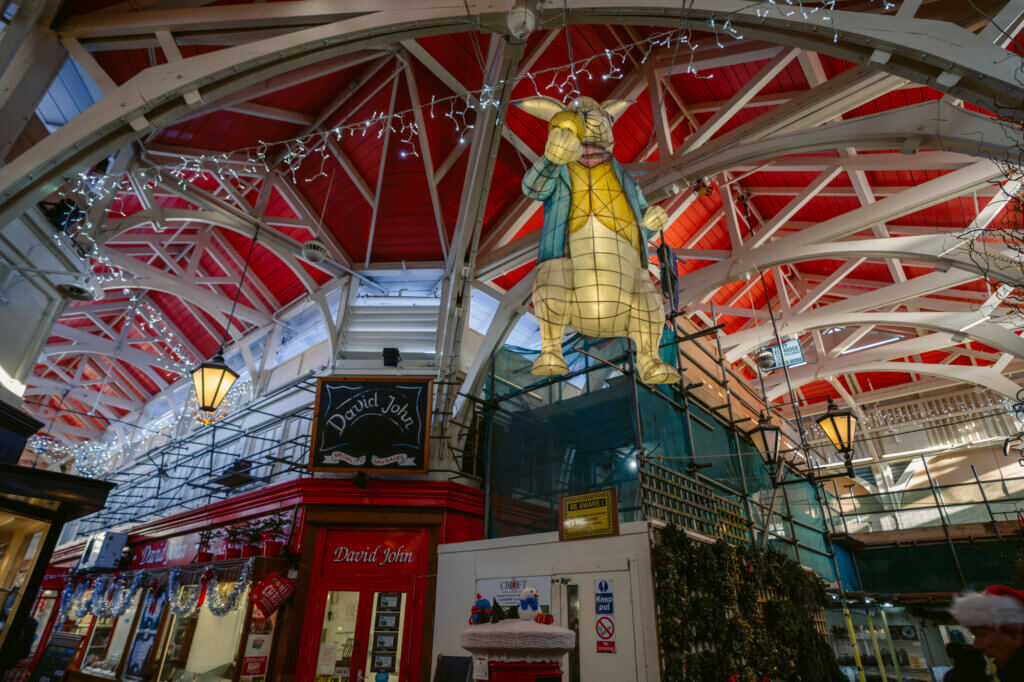
The Pitt Rivers Museum
One of the most fascinating university museums in Oxford is the Pitt Rivers Museum, an archaeological and anthropological museum that’s attached to the Oxford University Museum of Natural History.
This museum houses more than 500,000 items from all around the world, and is unique in that objects are displayed grouped by use, rather than the era or location where they are from. The Pitt Rivers Museum also looks incredible, with all the exhibits displayed in glass cases that completely fill one huge room, which also has two balcony displays around the walls.
The pièce de résistance is the 11.36 metre tall Haida Totem Pole from British Columbia in Canada, although other highlights include a collection of Japanese noh masks as well as models of fishing boats from around the world.
PRACTICAL INFORMATION FOR VISITING: The Pitt Rivers Museum is free to visit. It’s open on Mondays from midday until 5pm and Tuesday to Sunday (plus Bank Holiday Mondays) from 10am until 5pm.
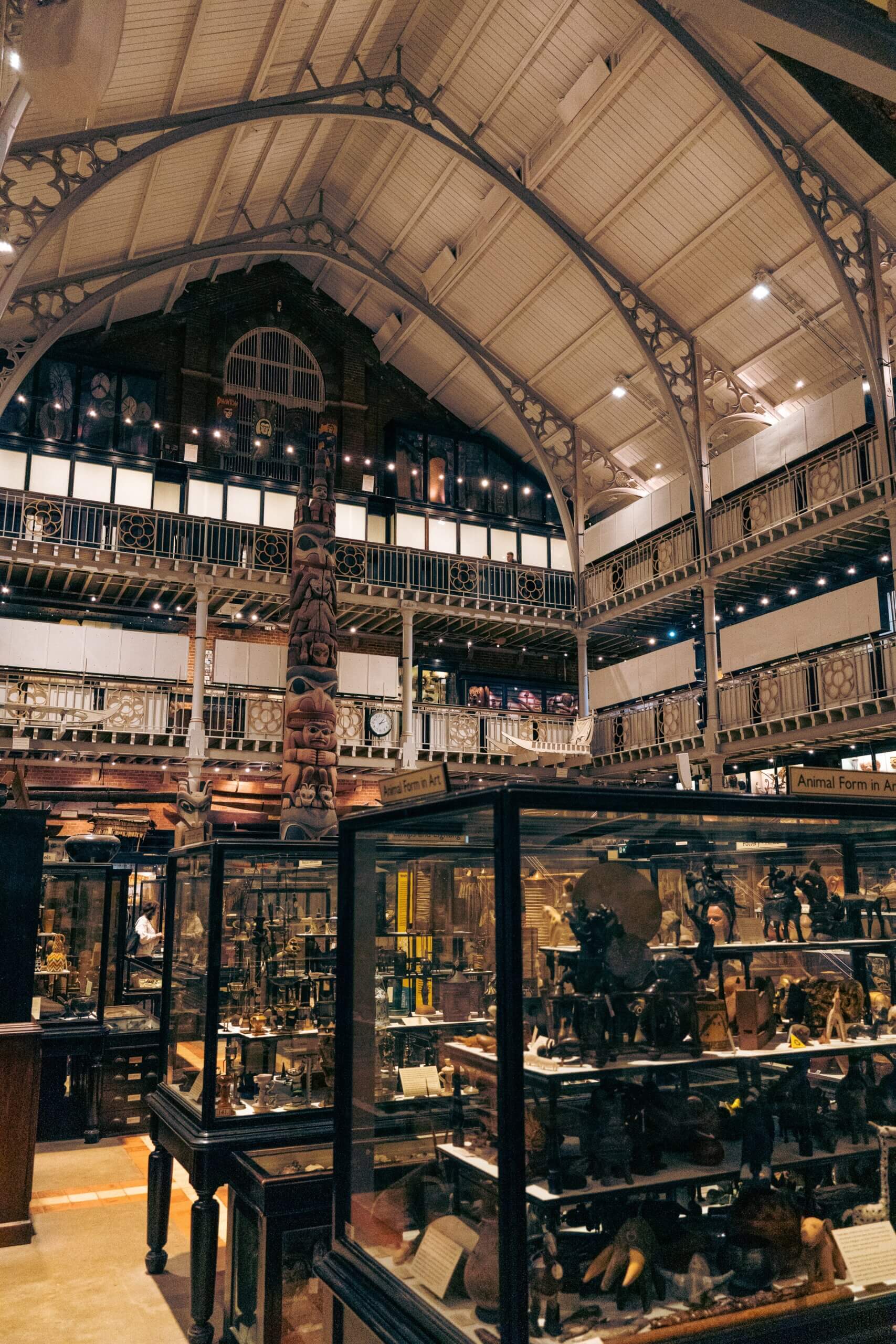
The Story Museum
If you’re looking for fun things to do in Oxford with children (including older kids and even adults) then the Story Museum provides a really unique and interactive experience.
Anyone who enjoys comic books, novels, television or movies enjoys stories and the Story Museum is all about “celebrating the power of stories to teach and delight.”
There are exhibitions on beloved classics such as the Narnia Chronicles and Alice in Wonderland, while exhibits such as the Whispering Wood are filled with snippets of folklore and mythology.
There are numerous activities and workshops held here for children and school groups, but any age group is sure to find it delightful!
Temporary exhibits have also recently included props and costumes from the BBC production of His Dark Materials by Philip Pullman, which is appropriate since much of the story takes place in a fictionalised version of Oxford.
PRACTICAL INFORMATION FOR VISITING: The Story Museum is open every day from 9.30am until 5.30pm (until 4.30pm on Thursday and Friday). Tickets cost 12 GBP for the main galleries but check the website for prices for special exhibits or events.
Oxford Botanic Gardens & Arboretum
One of the most beautiful places to visit in Oxford is the University of Oxford Botanic Garden which sits next to the River Cherwell, opposite Magdalen College.
This is the oldest botanic garden in the whole United Kingdom, originally founded as a medicinal physic garden in 1621. Today there are more than 5,000 different plant species on display, including some of the rarest trees in the world.
There are also seven display glasshouses where visitors can enjoy beautiful water lilies, carnivorous plants and other plants from hot or humid areas.
The walled garden is the oldest section of the gardens, where the original physic garden was located and still displays many medicinal plants. This is also where the Literary Garden is located, where fans of Alice in Wonderland can search for the Cheshire Cat hiding in the trees!
In the Lower Garden is another literary location, Will and Lyra’s bench from the His Dark Materials book and television series, as well as an orchard, a rock garden and the pretty water garden.
PRACTICAL INFORMATION FOR VISITING: The Oxford Botanic Gardens & Arboretum are open every day from 10am until 5pm (last entry at 4pm) and tickets cost 6.30 GBP for adults. Children under 16 can visit for free if accompanied by an adult.
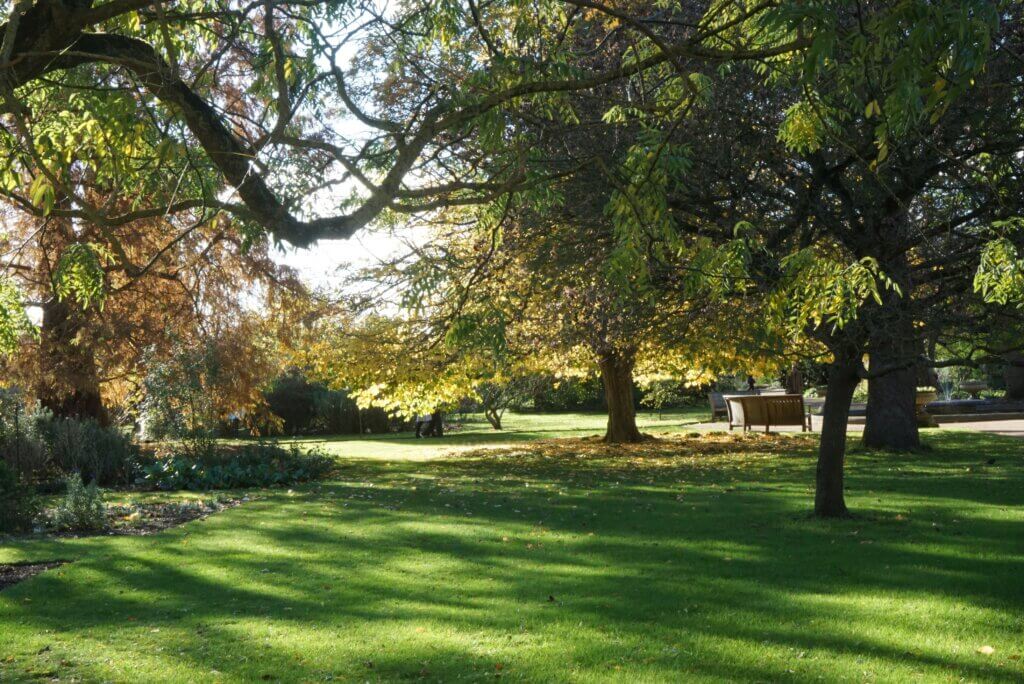
History of Science Museum
Anyone interested in history and science will want to explore the History of Science Museum in Oxford, as it’s also the oldest surviving purpose-built museum in the world.
The building that now houses the History of Science Museum was first opened in 1683 as the Ashmolean Museum, purposely built to display the collection of Elias Ashmole. As well as a museum, this building was also used for teaching, with a chemical laboratory and anatomical theatre in the basement.
After subsequent donations, the museum was renamed the History of Science Museum, and the building is usually referred to as the Old Ashmolean Building to distinguish it from the current Ashmolean Museum.
Today this is a fascinating place to see objects used for scientific study dating all the way back to antiquity until today. One of the highlights is a blackboard that Albert Einstein wrote on during a lecture at Oxford University, but there are many more interesting instruments from around the world.
PRACTICAL INFORMATION FOR VISITING: The History of Science Museum is open Tuesday – Sunday from midday until 5pm and is free to visit, but donations are always welcome.
New College
Contrary to its name, New College is actually one of the oldest university colleges in Oxford, founded in 1379 by William of Wykeham.
New College is also one of the most beautiful Oxford colleges, with grand buildings in the perpendicular style. When it was first constructed it was larger than all six of the other colleges at the time combined! Since it was also built around a section of the old city walls, New College resembles a castle, and sections of it were even used to portray Hogwarts in the Harry Potter films.
It’s possible to visit New College even if you’re not a student, to see the stunning gardens, cloisters, main hall and chapel. The walled garden, in particular, is absolutely gorgeous, and was also used as a filming location for the BBC’s His Dark Materials series.
If you manage to time your visit for one of the choral services in the chapel you’ll also get to hear one of the most renowned choirs in the United Kingdom.
PRACTICAL INFORMATION FOR VISITING: It costs 8 GBP for adult tickets to visit New College. Check the website for their opening hours as times vary throughout the year.
Jericho
Jericho is a very hip neighbourhood north of Oxford’s city centre that’s well worth a visit if you want to experience something a little different to all the university attractions.
This area is located just outside Oxford’s old city wall, so it’s believed it was named Jericho as it was where travellers rested if they’d arrived after the gates had closed. In the past, this was an industrial area, and later the town’s Red Light District, but today Jericho is a colourful spot to explore filled with excellent pubs, cocktails bars, restaurants, an arthouse cinema and vintage shops.
Aside from eating, drinking and shopping, one of the best things to do in Jericho is to go for a walk along the Oxford Canal, where many colourful canal boats are moored. If you continue further out to Port Meadow you can walk or picnic alongside ponies in the beautiful Oxford countryside.
Wolvercote Cemetery
Further north of Jericho is the Wolvercote Cemetery, which is most famous for containing author J.R.R. Tolkien’s grave.
While many fans of Tolkien’s works come here to visit his grave, the entire cemetery is also quite interesting and beautiful.
One of the most unusual aspects of Wolvercote Cemetery is that it has different sections for the burial of people from many different faiths, including Baháʼí, Muslim, Jewish, Greek Orthodox, Russian Orthodox, Serbian Orthodox, Polish Roman Catholic, other Roman Catholic and Quakers.
Of course, if you loved The Hobbit, The Lord of the Rings and/or The Silmarillion, then you will be most interested in seeing the grave of both J.R.R Tolkien and his wife Edith. They are buried in the same grave and the headstone is also marked with the names ‘Beren’ and ‘Lúthien’, two characters from his own writings who had an epic love story.
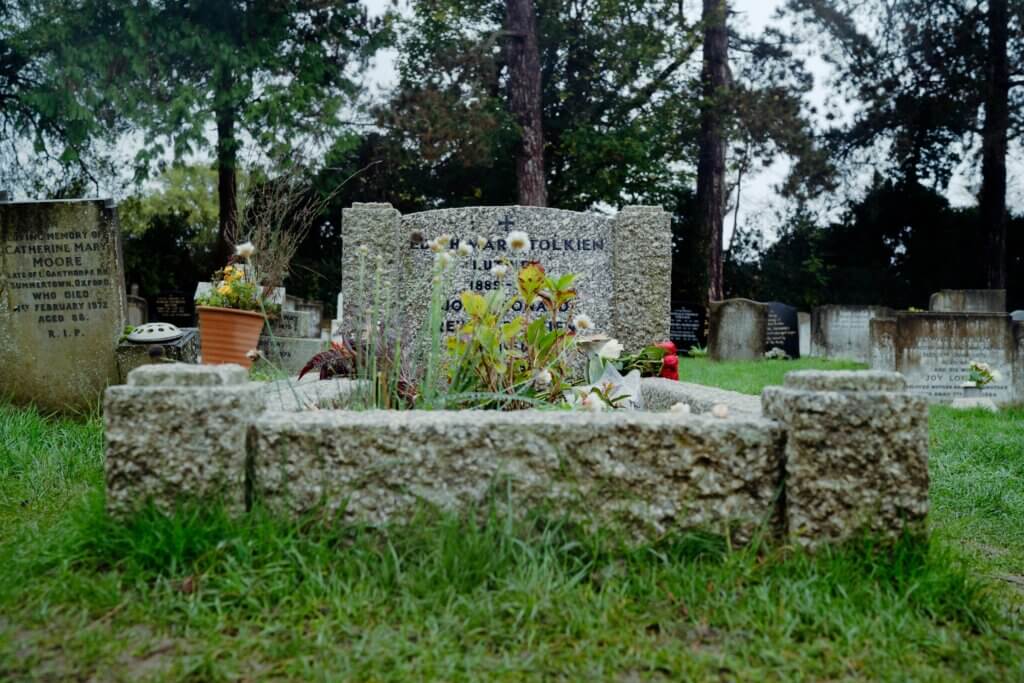
Bear Inn
There are various excellent pubs for a drink in Oxford, and many of these also contain interesting items, but perhaps the most unusual is The Bear Inn.
The Bear is unusual for two reasons. First, it was originally the early 17th-century residence of the stableman for a coaching inn on the High Street called The Bear Inn. This residence was converted into a pub called the Jolly Trooper in 1774. When the original Bear Inn was later converted into housing in 1801, the Jolly Trooper was renamed The Bear (or The Bear Inn).
The second reason the Bear Inn is unusual is because it contains a collection of more than 4,500 snipped neckties from around the world!
In the 1950s the landlord at the time began a tradition of accepting a snipped necktie from patrons in exchange for a beer, although the tie had to come from a club, team, school, or branch of the military or police from around the world to qualify.
While you can no longer get a beer in exchange for a necktie here, you can still come in for a drink and to marvel at all the different neckties on display, every one of which includes a label saying where it came from.
Oxford Artisan Distillery
Another great Oxford attraction for fans of a stiff drink is the Oxford Artisan Distillery, where spirits are distilled from local grains.
The Oxford Artisan Distillery is the first distillery in the city, and they distill a variety of different drinks on the premises. Visitors can peruse and purchase several different gins, whiskies, vodkas and liqueurs and/or join a tour to learn more about the process.
There are two different tours available, one is specifically about their whisky distillery (for the whisky connoisseurs) while the other goes behind the scenes of distilling vodka, gin and rye spirit. If you don’t have time for a tour then it’s also a great spot to pick up a local gift or tasty souvenir for yourself!
BONUS: Blenheim Palace
While it’s not located in Oxford proper, the stunning Blenheim Palace is just a 25-minute drive away and well worth the time to visit if you’re in the area.
Most famous as the birthplace of Sir Winston Churchill, Blenheim Palace is also notable for being a UNESCO World Heritage Site as well as the only country house in England to be called a palace, without being owned by a royal or a bishop. Constructed between 1705 and 1722, Blenheim Palace is one of the largest houses in England and surrounded by a gorgeous English landscape garden.
Today visitors can explore most of the truly opulent interiors (the house is still used as a residence for the Dukes of Marlborough) and gardens, including a lovely butterfly house. At Christmas the palace is also the site of a pretty spectacular light show and Christmas market, so it’s definitely a joy to discover at any time of year.
PRACTICAL INFORMATION FOR VISITING: Check the website ahead of your visit for opening information, as the palace is occasionally closed for private events and opening times vary throughout the year. Tickets aren’t cheap, at 35.50 GBP for adults but they are valid for a year so you can visit more than once.
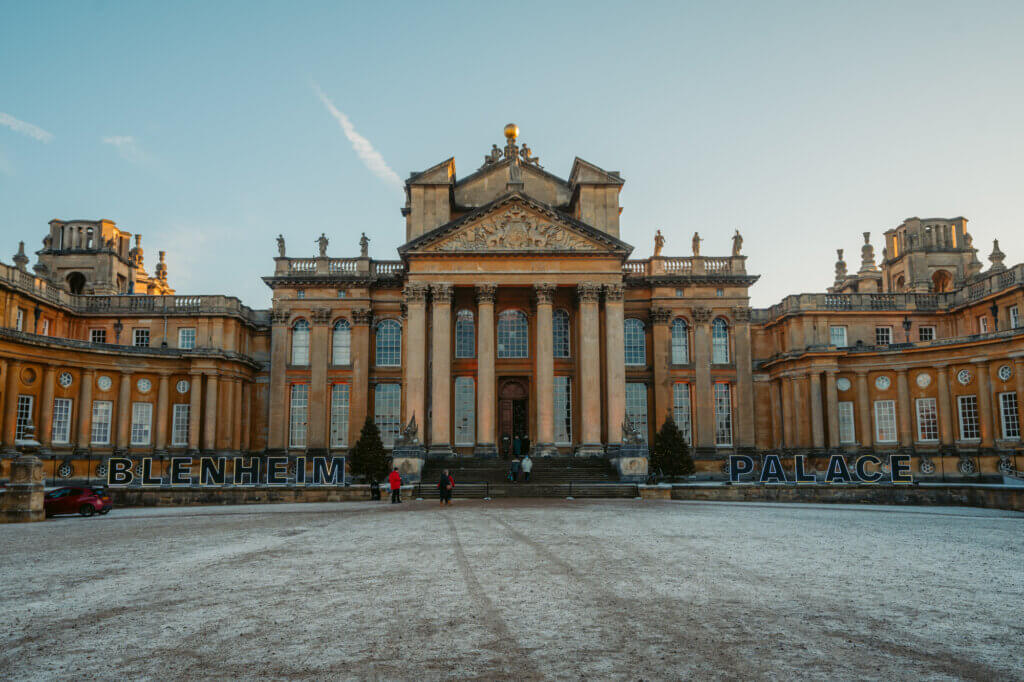
Have we missed any of your favourite places to visit in Oxford?
Let us know in the comments!
